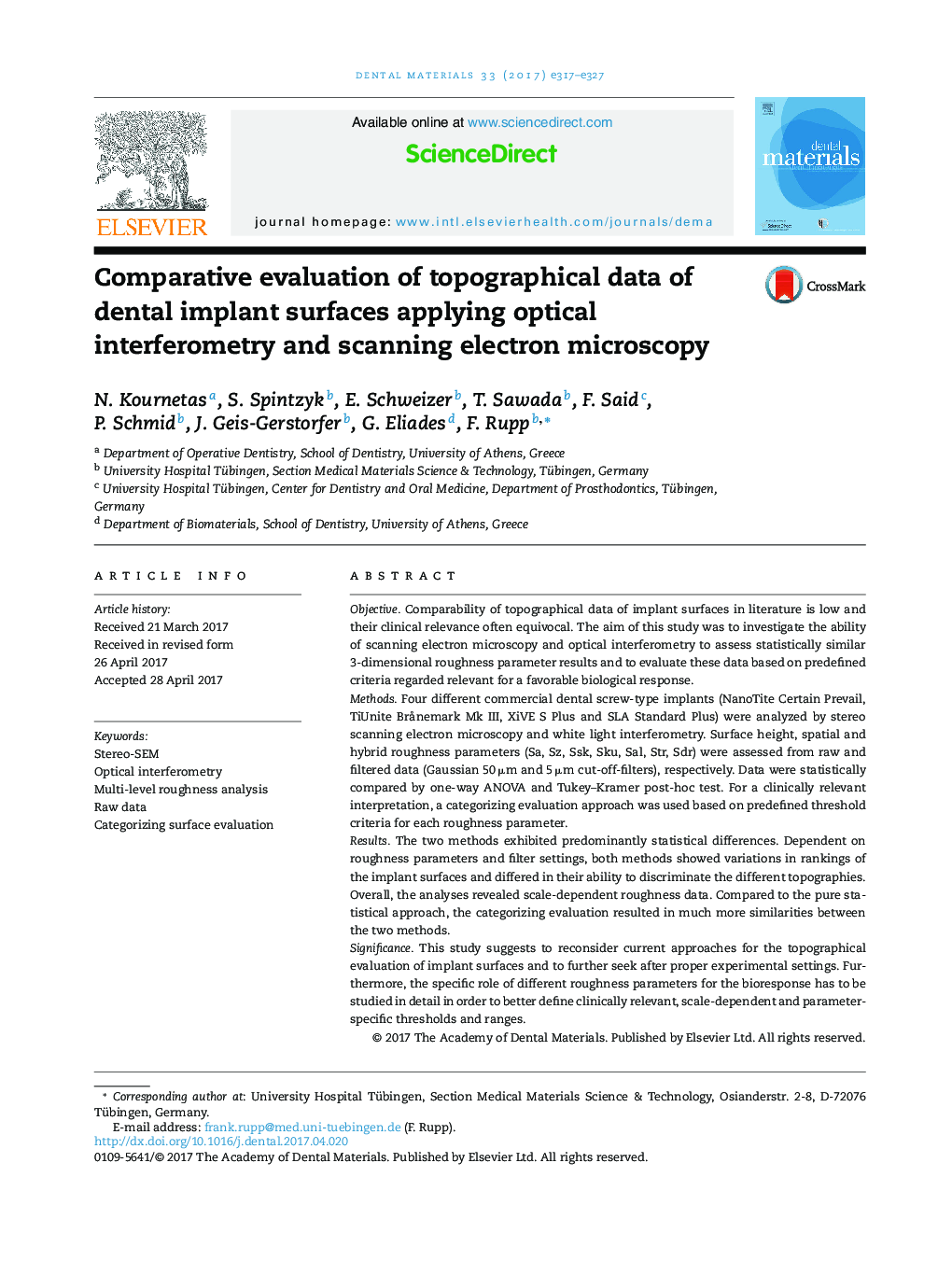| کد مقاله | کد نشریه | سال انتشار | مقاله انگلیسی | نسخه تمام متن |
|---|---|---|---|---|
| 5432980 | 1398050 | 2017 | 11 صفحه PDF | دانلود رایگان |
- Roughness analyses of marketed dental implant screws was conducted.
- Stereo-SEM and interferometry exhibited predominant statistical differences.
- Both methods revealed different ability to discriminate between surfaces.
- A clinically relevant categorizing approach showed promise for evaluation.
- Surface analyses of implants require more sophisticated guidelines.
ObjectiveComparability of topographical data of implant surfaces in literature is low and their clinical relevance often equivocal. The aim of this study was to investigate the ability of scanning electron microscopy and optical interferometry to assess statistically similar 3-dimensional roughness parameter results and to evaluate these data based on predefined criteria regarded relevant for a favorable biological response.MethodsFour different commercial dental screw-type implants (NanoTite Certain Prevail, TiUnite Brånemark Mk III, XiVE S Plus and SLA Standard Plus) were analyzed by stereo scanning electron microscopy and white light interferometry. Surface height, spatial and hybrid roughness parameters (Sa, Sz, Ssk, Sku, Sal, Str, Sdr) were assessed from raw and filtered data (Gaussian 50 μm and 5 μm cut-off-filters), respectively. Data were statistically compared by one-way ANOVA and Tukey-Kramer post-hoc test. For a clinically relevant interpretation, a categorizing evaluation approach was used based on predefined threshold criteria for each roughness parameter.ResultsThe two methods exhibited predominantly statistical differences. Dependent on roughness parameters and filter settings, both methods showed variations in rankings of the implant surfaces and differed in their ability to discriminate the different topographies. Overall, the analyses revealed scale-dependent roughness data. Compared to the pure statistical approach, the categorizing evaluation resulted in much more similarities between the two methods.SignificanceThis study suggests to reconsider current approaches for the topographical evaluation of implant surfaces and to further seek after proper experimental settings. Furthermore, the specific role of different roughness parameters for the bioresponse has to be studied in detail in order to better define clinically relevant, scale-dependent and parameter-specific thresholds and ranges.
Journal: Dental Materials - Volume 33, Issue 8, August 2017, Pages e317-e327
